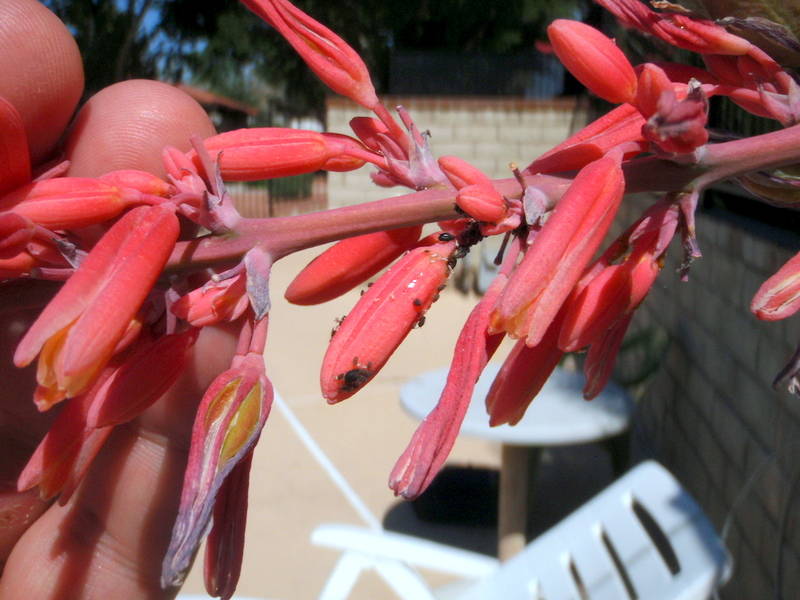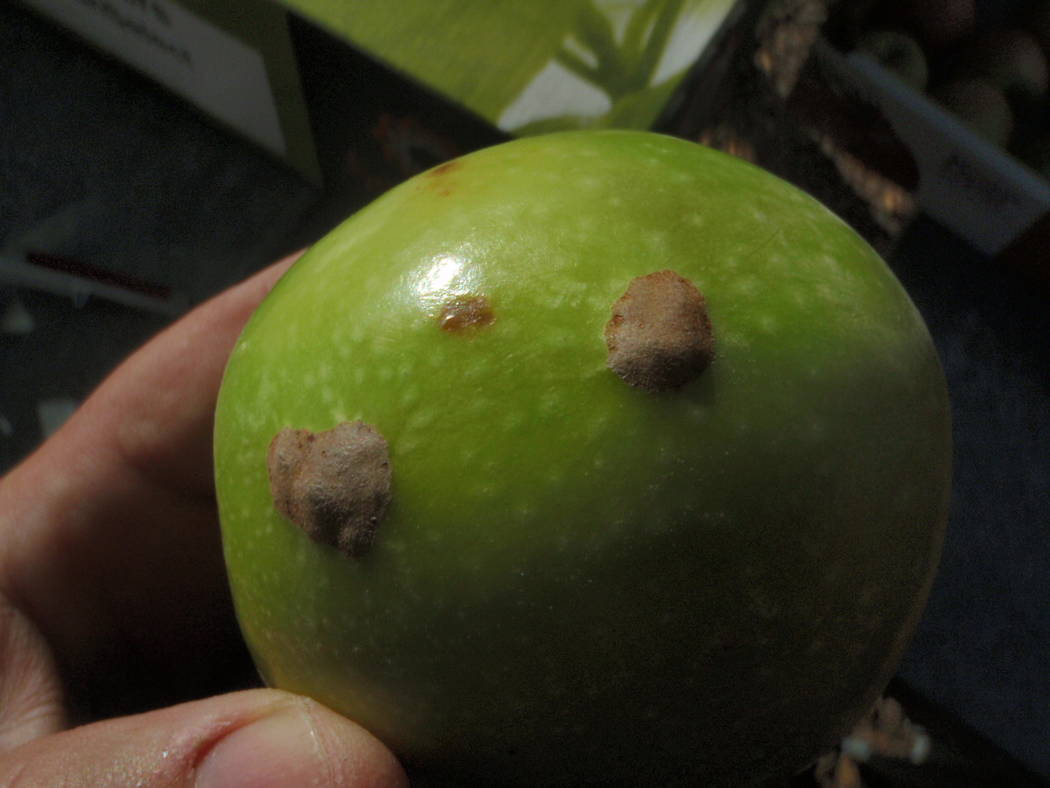Correct landscape microclimate key to growing clematis
Q: Recently you mentioned that clematis can grow in Las Vegas. I would like to grow these very attractive vines here. Which ones do you recommend?
A: Clematis is a beautiful climbing vine usually associated with wetter and cooler climates and Eastern gardens. However, clematis should be tried more in the Las Vegas Valley if planted in the right landscape microclimate and planted correctly. It likes its roots in cool, organic and moist soils, but the vine likes heat and bright sunlight.
Clematis is Chinese and Japanese in origin and should not be surrounded by rock mulch and cacti. It should be part of the wetter part of a landscape, along with roses, hibiscus and jasmine.
Clematis paniculata, sometimes called sweet autumn clematis, is a vigorous grower with a diameter of up to 1 inch and fragrant white flowers. Clematis Jackmanii, developed over 100 years ago in 1862, has much larger royal purple flowers and is commonly thought of when clematis is mentioned. They both work here.
Other varieties of clematis come with deep crimson, white, lilac and sky-blue flowers. Any of them should be tried. There are too many hybrids to list that probably work here if planted correctly and in the right location.
But remember that this plant does best in partial shade or at least with some protection from late afternoon sun. The tops of the vines can be in full sun, but the roots should be grown in cooler soils and kept mulched with compost, woodchips or aged manure.
They should be planted in soil amended with lots of compost, peat moss and aged manure. Most are strong climbers. They climb with stems twisting around supports, so use a strong trellis and put them in locations where people can appreciate them.
Q: I searched your blog but could not discover if ants are good pollinators or not. I know bees are. I have more than two acres in Sandy Valley and have seen six to eight different types of ants scurrying about the property. Are ants beneficial or will they become a problem for fruit trees I am planting?
A: The best pollinators for fruit trees, hands-down, are honeybees — more specifically, Italian honeybees, the type that produce honey collected by beekeepers. They are workhorses when it comes to pollinating fruit trees and vegetable gardens.
Other types of bees — solitary bees such as the leafcutter that cuts near perfect circles in the leaves of roses, grapes and basil — are strong workers later in the year and important pollinators for late spring and summer bloomers like alfalfa and clover.
Ants don’t contribute anything to pollination of fruit trees, in my opinion. I consider them mostly nuisance insects that contribute to insect problems in fruit trees in a secondary way. How? They love aphids and will defend them to their death against anything or anyone that threatens aphid populations.
In fact, ants distribute aphids throughout a fruit tree canopy, similar to how we move cattle to new pastures. Aphids are common in the spring of the year, feeding on new growth of fruit trees. Their feeding causes leaves to become sticky, roll and curl. Ants move mother aphids around to increase populations and their own food supply for subterranean nests.
While feeding on plant leaf juices, aphids drip sugary excrement that ants use for food inside their colony. Next time you find an aphid problem in fruit trees, look at the ground nearby. You will see an ant mound, an opening to a subterranean ant nest. There is a good reason for their close association to aphids.
For this reason, I don’t like ants in orchards, and I make a point of eliminating ant colonies when I see them near fruit trees. Several methods can be used to eliminate them, but I find ant baits, taken back inside the colony, to be among the most effective. Seldom are ants beneficial when growing plants for human food.
Q: I have a 15-foot-tall yellow fig tree that I cut back every winter to about 8 feet. It grows aggressively every year and usually fruits three times a year with large, sweet figs. This year, its first fruit was good, but I only got about 10 figs. I planted a kumquat tree near it and applied the recommended fertilizer. Did that fertilizer cause the fig to stop producing fruit? It doesn’t look like it’s going to fruit again this year.
A: It is hard to say definitively, but if the tree has an abundance of nitrogen fertilizer, it will frequently grow lots of leaves and stems and sacrifice fruit production. This is particularly true if the tree has also been cut back severely.
Plants are opportunists. If an abundance of nitrogen is available, they put excess nitrogen to the best use they can, which is leaf and stem growth, not fruit production.
Fruit production slows leaf and stem growth. Nitrogen speeds up leaf and stem growth. So this next year it should be back in production if you reduce the high-nitrogen fertilizers and winter pruning.
Q: Would a fig tree produce figs if it got sun in the spring, fall and summer months but not the winter? I have lots of spots to plant trees, but a house blocks winter sun.
A: Success depends on how much sunlight plants get when leaves are out. When leaves are gone, sunlight is not nearly as important. Winter sunlight is not terribly important for trees in our climate. But light during spring and summer months, when leaves are out, is very important.
Fruit production is usually not controlled by an “on and off” switch. As the total amount of light decreases, the amount of fruit produced also decreases.
If sunlight continues to decline during months when leaves are out, at some point there won’t be enough light for the plant to make flowers and produce fruit. It stops producing fruit, only leaves and stems.
If a fig tree is getting a minimum of six hours of sunlight when leaves are present, it will probably produce decent fruit. Not all this light has to be direct sunlight. Reflected light also counts, but not as much.
Fruit production also depends on the quality of reflected light. If the light is reflected off shiny or white surfaces, then plants receive more light than light reflected from darker or variously colored surfaces.
Q: I have a Bartlett pear tree producing fruit with brown spots in the flesh. I understand this is because of a calcium deficiency and is remedied with calcium sprays to the tree. If I put calcium in the soil and let it soak in over the winter months, will this remedy this problem instead of spraying?
A: No. There is plenty of calcium in our desert soils. That won’t solve the problem. This abundance of calcium is locked up by the soil and not reaching the fruit. There is plenty of calcium in the soil, but it’s not released fast enough to satisfy a huge demand for calcium by the fruit.
The only way to correct this problem is with calcium sprays. The calcium from the spray is absorbed directly by the fruit.
In pears, this problem is called “corky spot.” In apples, it is called “bitter pit.” Corky spot and bitter pit develop on older trees that have been harvested for many years. Brown spots develop in the flesh of pear and apple fruit because of a calcium deficiency inside the fruit.
Fruits, full of calcium, are removed from the trees. A rapid uptake of calcium from soil by tree roots causes a void of calcium in the soil. Calcium is needed by the next crop of fruit the following year, but it’s not available.
To solve this problem, we feed the tree calcium “backward” — force the calcium inside the fruit by spraying rather than relying on tree roots. It may not make much sense when the soil is so chock full of calcium, but spraying the tree with calcium is the only way to get rid of these brown spots.
Calcium sprays are applied to the tree with most of the spray landing on the fruit. The most effective sprays are from calcium chloride dissolved in water. A wetting agent is added to the mixture to improve calcium absorption inside the fruit. These sprays are applied five times each year as the fruit is enlarging.
Bob Morris is a horticulture expert and professor emeritus for the University of Nevada, Las Vegas. Visit his blog at xtremehorticulture.blogspot.com. Send questions to Extremehort@aol.com.
























